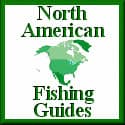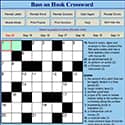Bass on Hook is Supported by our readers. As an Amazon Associate We earn commissions from qualifying purchases. For more informtion read our Amazon Affiliate Disclosure and Affiliate Disclosure Policies.
Small Rivers - Big Cats
By Ted Ellenbecker
To consistently take big fish from smaller river systems one must first consider the large river systems such as the Ohio, Missouri, Mississippi rivers and their tributaries.
If a catfisherman uses his common sense, he will consider the need of the big fish to follow the baitfish, along with their urge to push into an increase of water flow!
You can expect excellent fishing for both channel catfish and flathead catfish by using the following steps, presentations and information.
Steps To Catch Catfish In Small Rivers

The small rivers that you should consider will join a large river system known to hold large catfish, preferably both channel catfish and flathead catfish.
The reason that I will not include blue catfish in this group is that they are less likely to venture far from the larger rivers.
Extreme depth in the small rivers is not critical to their value, a 4-foot average with holes dropping to 10 to 15 feet will suffice.
If these small rivers course through timbered land so much the better.
The resulting logjams are the spawning grounds for both species, making it even more attractive, combine this with a moderate to swift current and you will find fish!
If you have the option the first choice of a small river would have to be one that empties into the large river within 30 miles of a dam on the large river.
Second choice would be a small river that empties into the large river in a series of wing-dikes or other fishy habitat such as riprap or timber.
In this area the heavier the flow on the big river the better!
As this will push cats to the outer edges of the heavy current causing more fish to come into contact with the spring flow of your chosen river.
On most of these small rivers we will concentrate on the lower ⅓.
Or from the mouth of the small river to the first impasse, such as a dam, or noticeable change in the small rivers make-up such as a change in the depth or available cover.
Locate where the river itself changes, this will probably be in proximity of the upper end of the lower ⅓ of your chosen river.
Find the most prominent and complex structures that create current breaks and begin there.
Spring Time Brings The Big Catfish To River Obstructions
Spring is the time when the big cats begin to congregate below obstructions in the fast flowing water.
The larger, more complex and prohibiting the structure the better, whether it is a dam or other natural obstruction the more and larger fish will utilize it as a holding area.
This is also the time when a fisherman can become a local legend within the catfishing clan, especially when a small dam is involved.
About ten years after actually seeing that little stunt happen, it was time I thought to try to find out why and how it worked.
After more than a couple of months of trial & error experimentation, I finally did!
Paul Harvey from the radio show of the same name, would probably say now, "stay tuned for the 'Rest of the Story'"!
Access is usually easy and the fish are willing.
This is also the period of time that is filled with anticipation while waiting for each and every bite, because while you will always have a resident population of cats in these small rivers.
The high water of spring can and will bring fish into your water system from many miles away, possibly even fish that have never been in your chosen small river.
It is this unknown and anticipation that draws all of us to the edge of the water year after year.
The Right Bait Is Crucial For Catching Big Catfish
One mistake I have witnessed year after year when it comes to bait, at least with the flathead fishermen in our area, is they use a live bait that is too large for this time of year.
These big fish are coming out of a resting period and while their are willing to bite, their speed and aggressiveness has not yet peeked.
A baitfish of 4 to 6 inches will produce far more hook-ups than a 10-inch sucker at this time of year.
The results of using a bait that is to large can be seen in to ways, either an empty hook will be continually retrieved or the bait comes in crimped as if grabbed by a pliers, or literally cut in half depending on the aggressiveness of the fish.
At this time of year if you are fishing for channels a slightly tainted piece of cut bait would be the preferred option.
Another benefit of slightly smaller bait at this time of year is that in the swollen river it is easier to hold smaller bait in position.
Remember positioning means everything in fishing, if a fish can't find your bait you won't get bit.
Get Your Rigging Right For Catfish
As for rigging, the standard slip rig consisting of a 1 to 5 ounce bell sinker, a swivel and a leader of approximately 8 inches combined with the hook of you're choice, a 1/0 to a 5/0 will work.
Always adjust your hook size to match the fish your looking for, but more importantly, to the size of bait you're using.
I prefer a O'Shaunessey style hook in the 3/0 to 5/0 for flatheads and a number 1 to a 3/0 for channels, size again will depend on the variables involved, such as the size of fish I plan on encountering and the type and size of the bait.
The reason for this type of rigging is that in this cold water, while the fish are willing to bite, active and feeding, they will seek-out the slightly calmer water that is available near the bottom, rather than the main current flow that is higher-up in the water column.
There is a second choice for rigging that can be used in the event the bottom is cluttered and will not allow a presentation on the bottom.
This is simply the common 3-way rig with the sinker dropping lower than the bait.
Try to keep your bait just off the bottom, over the top of the rocks.
Generally I will not use this rig unless it is absolutely necessary to do so to reach the fish, as it is a sacrifice situation.
You will most likely loose a lot of sinkers.
Be sure to tie off your sinker with a line about ½ the strength of your main line.
This will not only prevent you from losing the whole set up in the rocks, it can also save the fish on the occasion of a hook-up and the sinker is fouled.
In this case you can bust off the sinker and still possibly land your fish.
This type of rigging or hooking of a live bait fish may be used with both of the rigs I have mentioned, however use it only when the current is swift enough to wear out your bait or even kill it rapidly.
Hooking Your Bait Properly Is The Secret
In this case at times a stinger hook is a must ( where it is legal) if a high percentage of strikes are to become hook-ups.
Especially in those heavy currents where the bait is regularly partially missed on the strike.
This is my preferred way to hook-up a bait, when the type of bottom and current will allow it.
Done properly the bait will stay alive much longer than the traditional dorsal hook (second choice) when it is presented at the quite side of the current edges and on the bottom.
This set up allows the bait to stay upright and slightly off the bottom or as I call it heads up.
It also facilitates a more penetrating hook-set because the point of the hook is clear of your bait, allowing a more direct contact with the catfish on the strike.
The method of tail trimming will consistently keep a lively bait off the bottom, as the bottom of the tail is the only point of propulsion, any effort to swim will invariably push your bait fish off the bottom.
When working with cut bait for channel catfish or blue catfish both of the rigs shown will work.
To achieve an elevated position with cut bait I recommend using a worm blower to inject air in-between the skin and the meat of the cut bait.
You may have to lighten up your hook and leader to achieve the desired affect, however the difference in fish hook-ups can at times be significant.
The ability to recognize change is what separates the novice from the proficient.
Your "Edge" Will Determine Your Reaction
The knowledge "Edge" of how to react is what separates the proficient from the expert.
To start, when the trees begin to bud, the water warms and the currents slow just a bit.
Now is the time when larger bait will come into play.
Both with fresh cut bait and live bait!
 Some will continue to fish the dam with limited success.
Some will continue to fish the dam with limited success.
Others will quit for the year.
And others will continue to search out the cats by following them as they drop back towards the big river.
Some fishermen may even have to change rivers to maintain a high level of success.
This is the time to connect yourself with wood structures if at all possible, blow-downs logjams and similar structure.
The fishermen that follow this scenario go under many different names.
Jammers, runners or just good old river rats to name a few.
No matter what name they go by, they all follow the same rules.
"Go to the fish, because they won't come to you.
"Fishing Wood" Is Catfishing At Its Finest
No matter what you call it, fishing wood for big cats is catfishing at its finest.
Knowledge of water currents and judging the underlying contour is only the beginning of it.
There are many aspects to this type of fishing.
The Slipp'n Timber Method
One method we call slipp'in timber is a search technique, allowing you to look for active fish and cover a large amount of water at the same time.
You will want to approach the logs from the upstream side and drift at the face of the logjam, near the middle if it's a large jam, closer to the inside corner on a smaller jam.
Anchor a short casting distance away, being careful not to bang the bottom of the boat in the process.
If you do make any loud sounds add 20 minutes to your fishing time as it will take that long for the cats to come out from under the logs again.
Fish the middle of the face and inside corner from this position for twenty minutes.
If there's no action, pull up anchor (quietly) and slip to the inside or channel corner of the logjam.
Re-anchor your boat and from here fish the channel sidewall and the back channel-side corner current break.
Again fish for about twenty minutes.
At that point you will want to slip down to the next structure and repeat the procedure.
The Ambushing Method
The second technique is called "ambushing".
I will usually fish only two areas a night using this type of approach.
The first time period will be from one hour before dark until midnight.
The next is from 4am until 2 hours after sunrise.
Ambushing is a stealth technique and combines your knowledge, with patience and confidence in your own judgment of the water you're on.
The boat or lawn chair, which ever you prefer is positioned strategically to allow access to the best presentation possible.
This way of going is reserved for only the best structure on the water, the type of water that seems to be a little to perfect if you will.
You know the fish are under the pileup and you position your bait to intercept them when they come out to hunt.
Understanding Logjams And Structures
The best logjam on the river will contain a minimum of at least 3 of the major elements present in that body of water.
Simply fishing a structure is not enough - understanding what makes up the structure is essential for anyone to be able to fish with confidence.
Two rules that I follow in judging what to expect from a structure are:
The larger the area a structure covers the more fish it may hold
The more elements a structure has to offer the better the chances are that it will hold the largest fish in the system.
If you have a question or comment for Ted please feel free to send it via our Pro Staff Question And Answer form.
Your questions will be answered within 24-48 hours by Ted providing he is not away fishing.
Look for other articles written by Ted Ellenbecker in Ted's Pro Staff Angler Profile










